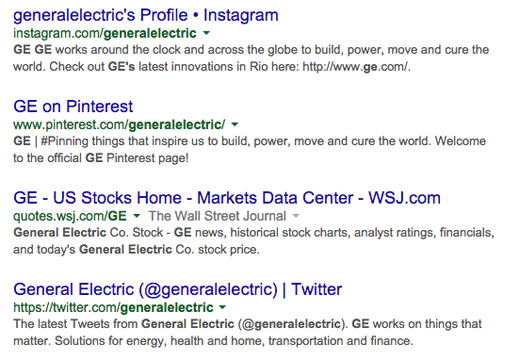
To get us started, let’s answer the question: “What IS SEO Content?”.
SEO refers to search engine optimization, which means search engines such as Google can easily find your website to direct people to it when it finds a match. Content is defined by any text or information listed on your website that can be consumed by search engines.
People usually refer to “SEO Content” as blog posts when they hear the term. However, this is not entirely correct. SEO content can be any page or post that targets a specific keyword phrase. This means that SEO content can be applied to your main website pages, category pages, custom post types, blog posts, product pages, landing pages and more. This is important to note because SEO content is more than just writing out long 2,000 word blog posts.
These are some of the most important types of SEO content, but there are many more that you could explore to boost your SEO content. Next let’s review our process of building SEO content.
You should first ask yourself what your goals are for your website and business. Do you want to drive sales, monetize your website, generate leads, and so on. Your goals will determine which type of content you should focus on.
For example, if you have an eCommerce site, you will most likely want to focus on creating content rich, optimized product pages as mentioned above in our list of types of SEO content. Your secondary focus would be on blog content that would illustrate when and how to use your products. It’s important to create internal links on your website and by creating blog posts related to your products, you can easily generate internal links to the relevant products.
Once you define your goals, you will need to research and find your keywords.
Keyword research is one of the first and most important steps in creating SEO content. To build your website traffic, either through organic or paid search, you have to use the correct keywords.
This will determine what content you should focus on based on the amount of search volume that exists. You can also use free tools that can determine the amount of competition and search volume. Our free keyword tool of choice is the Ubersuggest tool created by Neil Patel. But we’ll let you decide – We’ve compiled a list of recommend free keyword tools below. These tools will provide you with more data on each keyword. Keyword tools generally provide a list of related keywords, long-tail variations, google search volume, and competitors that rank.
Based on your keyword selection, you should create engaging, helpful content that supports your target audiences need. Your content should include different types of media such as videos, audio, images, or infographics. Remember to optimize your media content by creating meta descriptions, alt tags, and other meta data based on your keyword selection.
When you plan your content, you should strive for at least 1,500 words. That will be your target word count. Remember, a higher word count is only effective if it is readable, relevant, and useful to your audience. Make sure your content is easy to read by providing short paragraphs, images, bulleted lists, and headlines. Also, make sure to write your SEO content in a way that your average audience would understand. Do not write complex terms that only experts in your field would understand.
There is not a hidden secret for creating shareable content – simply just listen to your target audience and give them what they need based on your keyword research.
Having a strong social media presence can lead to website growth. Social media platforms and search engines favor users and websites that post more often. In fact, many marketers believe that links to your website via social media accounts do have a major impact on your SEO rankings. The links published on social media are marked as credible back-links when google and other search engines index content. In addition, social profiles are often amongst the top results in search listings for brand names. See below:

To best optimize social sharing across different social media platforms, you should focus on 1 or 2 to begin with. Also, to cross-promote your SEO content, you can’t simply broadcast the same message on each social network. You need to custom tailor your message to fit each social platform and audience.
Facebook and Twitter are two social media platforms that should be at the top of your list to focus on.
To share your content on Facebook, you can contain up to 10,000 characters, but note that only the first 480 characters are visible in the timeline, while the rest are hidden behind the see more link. So you will need to optimize your message for the first 480 characters to reach out to your audience in a meaningful way. This content should contain the same keyword that you used earlier from research. To further optimize your Facebook post, you should upload a related image and put a link to your content in the text field. This can help increase the reach of your post, as well as provide a backlink to your website. Engage with your followers by interacting or asking them a question to promote or encourage comments. Also, IMPORTANT to note, you can reshare your content every 2 to 3 months to optimize your SEO content.
To share your content on Twitter, focus on a message that is fewer than 140 characters. Include hashtags and mentions for better search and networking options. To gain more retweets, be sure to include images and links back to your website. Twitter has a shorten life span since users are constantly tweeting. 18 minutes is generally how long you have to reach users, so you will want to retweet your content multiple times per day.
By focusing on these two platforms, you can ensure consistency and value to your social followers which will lead to more traffic and followers.
SEO content should be a very important part of your business plan to consistently drive more engagement and traffic to your website. By applying the methods that we listed in the above article, your website can benefit from a steadily growing readership over time.
We provided you with the different types of SEO content such as blog posts and pages. We also defined the process of creating SEO content which includes:
If you have any questions or need help with your SEO content, our team offers a 100% guarantee to rank each keyword that you want to rank. Contact us today to learn more.